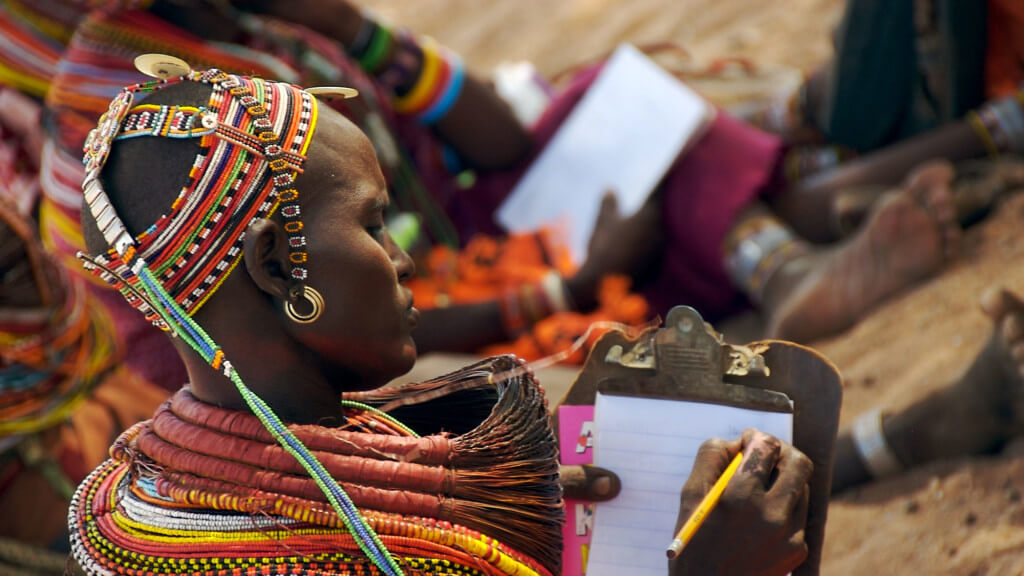[contentblock id=56 img=gcb.png]
In 1981 Nick & Lynne Swanepoel moved to Korr, northern Kenya, originally to translate the Bible for the unreached Rendille people. Now, having returned to South Africa, they look back over the 33 years they spent there:
The Hunger
Nothing in our missionary training prepared us for the physical needs we encountered when we first came to the Rendille. Our initial desire to learn the language was dampened when every encounter ended up in harsh begging. In 1984, the famine reached crisis proportions. The church accessed famine relief and was involved in the distribution. The next Sunday service the church was overflowing! We underlined that people were welcome to come and find out more about Christ, but that the distribution was not connected to their attendance. The next Sunday numbers dropped back again.
The Rendille
The Rendille live in the Kaisut Desert of Kenya, east of Lake Turkana, as semi-nomadic pastoralists. There are two distinctive groups: the northern Rendille, who herd camels, and the southern Rendille who herd cattle as well. Related to the Samburu, the Rendille are Eastern Cushitic peoples who migrated from the Suez Canal and Ethiopia, moving south to escape rivalry and conflicts over grazing land and water for livestock.
They live in ‘manyattas’ or homesteads of 70-100 houses. Each house is made of a stick framework with mats made from wild sisal fastened to them. Cow skins form the doorway. The whole house is designed to be taken down and strapped onto a camel, in accordance with their semi-nomadic traditions. Manyattas are built in a circle. Thorn enclosures for the livestock are inside the circle, so that any marauders would have to pass by the Rendille houses to get to the animals. Right in the centre is the naabo or gathering place where the Rendille meet to discuss village matters.
Rendille was an unwritten language, so first we worked on creating an alphabet. Teaching the Rendille literacy required starting from scratch, the students never having been exposed to literature before. But this work enabled the New Testament to be translated into their heart language. Although translating passages about agriculture proved difficult (the Rendille are nomadic camel herders living in an arid area where growing crops is impossible), stories like the good shepherd resonated with them very deeply.
The result of encounters with the written Scriptures using terms and idioms they were familiar with was explosive! One lady, Indubaayo, started literacy classes but then fell ill. Given the newly translated Gospel of Mark, she read chapter 13 verse 26 “…men will see the Son of Man coming in clouds with great power and glory,” and became afraid. She cried out and asked the Lord Jesus into her life. The Lord gifted her with the ability to write Christian songs in the Rendille music style, which has greatly enhanced the worship of the church.
The small church soon grew, and a much larger building was put up. Almost every literacy class resulted in a group of believers. Every Sunday they would walk long distances to the central Korr church for fellowship.
God Built It
Lynne worked on developing the Tirrim schools; 12 nursery classes in nomadic villages fed into two Primary Schools and a Secondary School. The Tirrim Nomadic Primary was built in an area that served many further villages. The church service there was eagerly attended. When asked what to call their church, the people replied, “Waakh Disse”, (‘God Built It’ church!)
The Rendille believers place a strong emphasis on evangelism. The local team engages in outreach to each of the fifty villages around Korr. When the team arrives, they are welcomed. “Why have you taken so long to come? We need to know more, come and teach us!”

